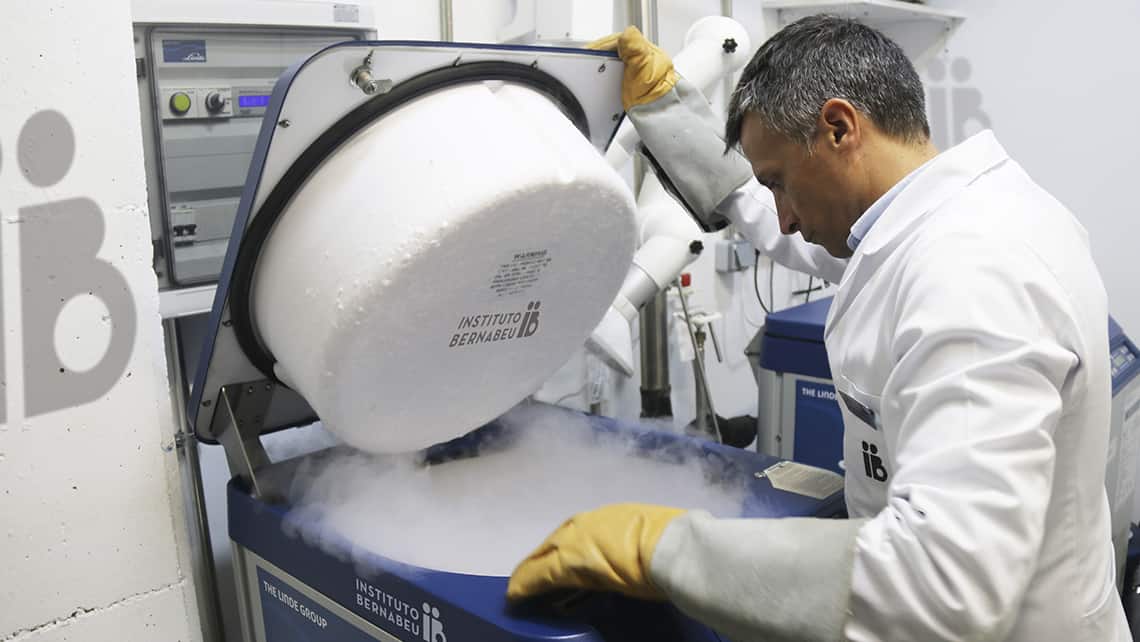More than 60,000 frozen embryos abandoned in Spain.
November, 24th 2023

- In Spain there are 668,082 embryos in the conservation banks, and about 10% of them have an uncertain fate and risk of being abandoned.
- The number is increasing due to the growing need for fertility treatments.
The delay of motherhood in Spain, caused, among other factors, by the current socioeconomic context, has led to an increasing number of people requiring fertility treatments to achieve their goal of becoming parents. As a consequence of this demand, the number of cryopreserved embryos in banks is constantly increasing, reaching 668,082 embryos in Spain alone, according to the latest data provided by the Spanish Fertility Society (SEF). At present, this causes an accumulation of embryos, with the added problem that many of them do not have a clear destination.
This situation generates a series of logistical problems for reproductive medicine clinics. The preservation of these embryos is costly because the maintenance of the facilities is costly; the consumption of nitrogen is also high, and more and more space is required in the liquid nitrogen tanks where they are stored.
There are 668,082 embryos in banks in Spain, of which about 60,005 it is estimated to be in a situation of abandonment, according to the Spanish Fertility Society (SEF). This represents about 10% of the cryopreserved embryos and leads specialists in reproductive medicine to an ethical and legal dilemma, derived from the impossibility of giving them a definite destination.
In Spain, and within the options allowed by law, approximately 45% of the frozen embryos are destined for use by the patients themselves, while 5% are donated to other couples for reproductive purposes, 18% are destined for research purposes and the remaining 18% are destined for destruction. However, there are slightly more than 10% for which there is no defined destination.
The Law on Assisted Human Reproduction Techniques provides that the clinics have the obligation to periodically ask the woman or couple to renew or modify the consent form where the destination chosen for their embryos is stated. If after two attempts the patients do not comply with this requirement, the embryos would remain at the disposal of the centre and could be used according to its criteria for any of the aforementioned purposes.
“We have to distinguish between what we call «abandoned embryos» and what we specialists classify as embryos that cannot have the destiny chosen by their parents. The reasons why an embryo may end up abandoned are diverse. The most common is because their owners abandon them or because it is impossible to locate the couple,” explains Jaime Guerrero, director of the Oocyte Donation and Cryobiology Programme at Instituto Bernabeu.
However, although the law contemplates that the fate of abandoned embryos would become the clinics responsibility, the truth is that it has limitations. Many of these embryos do not meet the requirements to be donated to other couples, nor can they be used for research projects because they do not exist, nor is it decided to destroy them in case they are claimed by their parents in the future. Ironically, although the parents have decided the fate of these embryos, this situation can also occur when they are unable to carry out their wishes, as they may not meet the requirements set out in legal regulations.
“Moreover, the legislation is not clear-cut and does not make it clear what would happen if the parents turn up after years of neglect and reclaim them. This uncertainty means that most centres choose to keep them indefinitely until the law clarifies the situation. In other words, these embryos remain in limbo, and in many cases cannot be used for other couples or for scientific research,” explains Guerrero.
Although certain adjustments are necessary, as Instituto Bernabeu’s medical team acknowledges, Spain’s Assisted Reproduction Law is one of the most advanced in the world and is a reference both for the techniques it regulates and for the people it is aimed at. In fact, patients from all over the world visit Spain to undergo fertility treatment. At IB, in particular, we attend to patients from 137 different countries every year.
More fertility treatments.
The increase in fertility treatments is coupled with a plummeting birth rate in Spain. According to data from the National Statistics Institute (INE), the number of children born in Spain is falling steadily, with the number of children per woman falling from 1.37 to 1.19 between 2010 and 2021. On the other hand, the average age at which Spanish women have their first child continues to rise, currently exceeding 32.6 years of age (in 2010 the age was 29.8 years old), with the difficulties this can cause for female fertility.
This is the reason way more and more couples are turning to specialists to conceive and, in Spain alone, in 2021, a total of 40,638 babies were born through assisted reproduction techniques, which represents 11.8% of total births (according to SEF).
